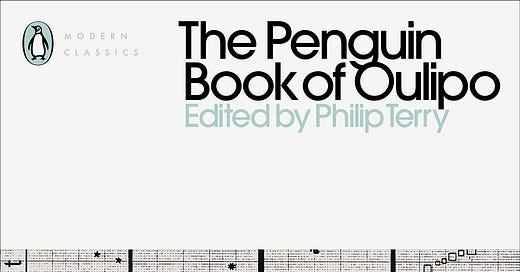Review of the Penguin Book of Oulipo, plus a course I'm running on the subject - UPDATED
Great techniques for dealing with writer's block, as well as just plain fun!
How do you deal with writer’s block? Chances are you follow the advice of the experts who advocate free writing: just write the first thing that comes into your head, and see what happens. But how about adopting a strategy that is diametrically opposed to this: using constraints?
It sounds counter-intuitive, but imposing a restriction is likely to lead t…
Keep reading with a 7-day free trial
Subscribe to Eclecticism: Reflections on literature, writing and life to keep reading this post and get 7 days of free access to the full post archives.




